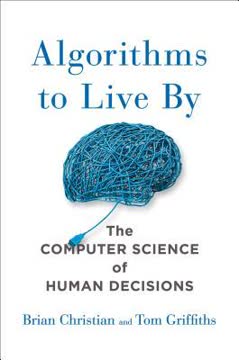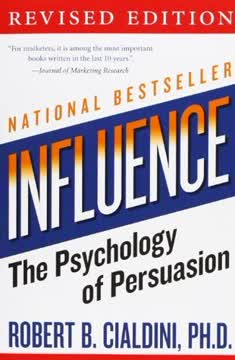Key Takeaways
1. The Groundswell is an unstoppable social trend driven by technology.
Simply put, the groundswell is a social trend in which people use technologies to get the things they need from each other instead of from companies.
A fundamental shift. The groundswell is a spontaneous, broad, and ever-growing movement of people leveraging online tools to connect, take charge of their experiences, and obtain information, support, ideas, products, and bargaining power from each other. This is a permanent, long-lasting shift in how the world works, affecting every industry.
Collision of forces. This trend is happening now due to the collision of three forces:
- People: Eternal desire to connect and rebel against institutional power.
- Technology: Ubiquitous, fast connections and interactive, people-aware software ("Web 2.0").
- Economics: Online traffic equals money, fueling rapid innovation and competition.
Unstoppable force. Attempts by traditional institutions to control or suppress this movement often backfire, amplifying the message instead (the "Streisand effect"). Examples like the Digg/HD-DVD key incident, the Comcast sleeping technician video, and the "Snakes on a Plane" fan takeover demonstrate the power of people moving together online.
2. Companies must adopt "Groundswell Thinking" to harness this force.
And while you can’t stop it, you can understand it. You can not only live with it; you can thrive in it.
Adapt or decline. The groundswell challenges traditional business models built on control. Companies that ignore or fight this trend risk losing market share, eroding profit margins, and becoming marginalized as customers turn to each other.
Jujitsu analogy. Groundswell thinking is like jujitsu; it allows you to harness the power of your opponent (the groundswell) for your own advantage. Instead of resisting the force, you learn to work with it.
Focus on relationships. The core principle is to concentrate on the relationships people are forming online, not just the technologies themselves, as technologies change rapidly. Companies like GM, with its FastLane blog, show that even large, traditional organizations can successfully engage and benefit from the groundswell by focusing on connecting with people.
3. Understand your audience's social behavior with the Social Technographics Profile.
The Social Technographics Profile lets you examine any group of people—Australians, first-time mothers, or your customer base—and see in exactly what ways that group is participating in the groundswell.
Not all people are equal. People participate in the groundswell in different ways and at different levels. A one-size-fits-all strategy will fail because it doesn't account for these differences.
The Social Technographics Ladder. This tool classifies online consumers into groups based on their level of participation:
- Creators: Publish blogs, videos, etc. (23% US adults)
- Conversationalists: Update status on social networks/Twitter weekly (31% US adults)
- Critics: Post comments, ratings, reviews, edit wikis (33% US adults)
- Collectors: Save URLs, tag sites, use RSS (19% US adults)
- Joiners: Use social networking sites (59% US adults)
- Spectators: Consume content (68% US adults)
- Inactives: None of the above (19% US adults)
Tailor your strategy. By profiling your specific audience (e.g., young adults, Alpha Moms, PC buyers, political groups, shoppers, disease sufferers), you can determine which groundswell activities they are already engaged in and build a strategy that meets them where they are, increasing the likelihood of success.
4. Build your strategy using the POST method: People, Objectives, Strategy, Technology.
We define the four-step POST process for creating strategies—people, objectives, strategy, and technology—and reveal why starting with the technologies is a mistake.
Avoid technology-first. Many companies fall into the trap of focusing on the latest social technology (e.g., "Should we be on TikTok?") before understanding their audience or goals. This leads to wasted effort and "groundswell approach-avoidance syndrome."
The POST framework:
- People: Assess your customers' Social Technographics Profile. What are they ready for?
- Objectives: Define your goals. What do you want to accomplish with the groundswell? (e.g., research, marketing, support).
- Strategy: How will relationships with your customers change? What is the desired interaction?
- Technology: Only now, select the appropriate social applications (blogs, networks, etc.) to achieve your objectives based on your audience and strategy.
Plan for transformation. A successful strategy starts small but plans for growth, considers the consequences of changing customer relationships, puts a senior person in charge, and carefully selects technology and agency partners who understand your objectives.
5. Companies can engage the Groundswell through five core objectives.
Regardless of what you are after, to get there you need not only the kind of data we’ve shown in this chapter but also a clear strategy—a framework for groundswell thinking.
Clear goals are crucial. Without a specific, measurable business goal, groundswell initiatives are likely to flounder. These objectives link social activities to familiar business functions.
Five primary objectives:
- Listening: Use the groundswell for research and customer understanding (links to Research).
- Talking: Use the groundswell to spread messages about your company (links to Marketing/PR).
- Energizing: Find enthusiasts and supercharge their word of mouth (links to Marketing/Sales).
- Supporting: Help customers support each other (links to Support/Service).
- Embracing: Integrate customers as collaborators in your business (links to Development/Innovation).
Start with one. While companies may eventually pursue multiple objectives, it's best to start with a primary goal and measure progress towards it. Success in one area can build confidence and lay the foundation for pursuing others. Business-to-business companies should remember they are engaging with people within businesses.
6. Listening to the Groundswell provides invaluable, unfiltered customer insights.
Your brand is whatever your customers say it is.
Beyond traditional research. Traditional market research (surveys, focus groups) is good for answering specific questions but often fails to reveal spontaneous, unfiltered insights or what you didn't think to ask.
Unfiltered insights. The groundswell provides a constant stream of opinions, positive and negative, about your brand, products, and competitors in customers' own words. This reveals:
- What your brand really stands for in customers' minds.
- How buzz is shifting over time.
- Sources of influence in your market.
- Potential PR crises early.
- New product and marketing ideas.
Listening methods. Companies can listen by:
- Setting up private communities (like NCCN with Communispace) for continuous, deep insight.
- Implementing brand monitoring services (like Mini with MotiveQuest) to track online chatter across blogs, forums, and social media.
Listening is the most essential neglected skill; it's easy in the groundswell and provides a crucial foundation for any other social activity.
7. Talking with the Groundswell requires authentic conversation, not just marketing shouts.
Face it: marketers no longer dictate the path people take, nor do they lead the dialogue.
Shouting is ineffective. Traditional advertising is about broadcasting messages ("shouting") to masses of people. In the groundswell, especially in the middle of the marketing funnel where purchase decisions are made, people are having conversations and trust each other more than ads.
Engage in dialogue. Talking with the groundswell means participating in these conversations on platforms where your customers are active. This requires listening and responding, not just broadcasting.
Talking techniques:
- Viral Video: Create engaging videos (like Blendtec, Tibco) that people choose to watch and share, driving awareness and traffic.
- Social Networks: Create a presence (like E&Y, Adidas, Pizza Hut) that encourages interaction and allows fans to spread your message.
- Blogging: Empower employees or executives (like HP, Emerson) to share expertise and respond to customer questions and industry events, building trust and credibility.
- Communities: Create dedicated spaces (like P&G's beinggirl.com) where customers can connect with each other and the company around shared interests or problems, subtly integrating brand messages.
Talking effectively requires understanding your audience's preferred platforms and being willing to engage in ongoing, authentic dialogue.
8. Energizing the Groundswell turns enthusiastic customers into powerful advocates.
According to the Word of Mouth Marketing Association (WOMMA), word of mouth “is the most honest form of marketing, building upon people’s natural desire to share their experiences with family, friends, and colleagues.”
Amplify the base. Energizing means identifying your most enthusiastic customers (promoters) and making it easy for them to spread positive word of mouth about your brand or products. This is a powerful, cost-effective form of marketing.
Value of energized customers. Promoters are highly credible, their messages are self-reinforcing, and they can generate exponential cascades of recommendations. Research shows a strong correlation between customer recommendations (Net Promoter Score) and sustainable growth. Companies like BzzAgent even sell word-of-mouth services, demonstrating its market value.
Energizing techniques:
- Ratings and Reviews: Encourage customers (like eBags) to share their opinions on your site, influencing potential buyers and providing valuable feedback to the company and suppliers.
- Create a Community: Build a space (like Constant Contact) for customers to connect, share successes, and support each other, fostering loyalty and generating referrals.
- Participate in Existing Communities: Engage with existing fan communities (like Lego, TiVo) through ambassador programs or direct participation, gaining insights and amplifying positive sentiment.
Energizing requires identifying customer passion points and providing platforms or programs that facilitate and amplify their desire to share.
9. Helping the Groundswell support itself saves costs and builds community.
People are far more willing to trust each other than a company, as we described in chapter 7.
Reduce support costs. Traditional customer support (call centers, Web self-service) is expensive and often frustrating for customers. Enabling customers to help each other online can significantly reduce these costs.
Tap psychic income. People are willing to help strangers online for "psychic income" – the good feelings from altruism, validation, recognition, or belonging to a community. Companies can tap this desire by providing platforms for peer-to-peer support.
Support applications:
- Support Forums: Create discussion boards (like Dell, Linksys) where customers can ask and answer each other's questions, saving the company support calls and generating searchable solutions.
- Wikis: Build collaborative knowledge bases (like BearingPoint, Intuit's TaxAlmanac) where customers can contribute and refine information, creating a valuable, self-updating resource.
- Questions & Answers: Implement Q&A systems (like Yahoo! Answers, Naver, Bazaarvoice) where users pose questions and others provide answers, leveraging collective knowledge.
Successful support communities require initial company participation to seed content and activity, clear policies, and often, a critical mass of engaged customers or experts.
10. Embracing the Groundswell integrates customers into innovation and processes.
This chapter is about finding practical ways to tap into customers to help you innovate now—to increase the chances of developing something your customers want.
Customers as collaborators. Embracing means going beyond listening, talking, energizing, or supporting to make customers an integral part of your business processes, particularly in product development and service improvement.
Accelerate innovation. Including customers in the innovation loop speeds up development because:
- Customers provide a constant source of ideas and feedback.
- You can iterate on ideas quickly based on rapid customer input.
- Confidence in customer-validated ideas reduces wasted effort.
Embracing methods:
- Innovation Communities: Create platforms (like salesforce.com's IdeaExchange, Dell's IdeaStorm) where customers submit, vote on, and discuss ideas for product features or improvements.
- Asking for Ideas: Directly solicit suggestions from customers (like Crédit Mutuel's "If I were a banker" campaign) through simple online forms or campaigns.
- Reviews for Improvement: Systematically analyze customer ratings and reviews (like Loblaw) to identify product flaws or desired features and implement continuous improvements.
Embracing requires humility, a willingness to act on customer suggestions (even if challenging), and integrating customer feedback into core business functions.
11. The Groundswell transforms companies, requiring cultural and organizational change.
As companies continue the voyage toward social applications, internal and external, they face management challenges.
Beyond isolated efforts. Companies don't become "social" overnight. They pass through stages of maturity, moving from scattered, uncoordinated social experiments to integrated, strategic uses of social technologies across the organization.
Stages of Social Maturity:
- Dormant: No social activity.
- Testing: Isolated, simple applications (often listening or talking).
- Coordinating: Extending initial successes, some cross-departmental coordination (governance councils, shepherds).
- Scaling & Optimizing: Social is integrated into core strategy, formalized processes, executive commitment, robust measurement, internal and external applications linked.
Common challenges. Progress is hindered by:
- Culture: Fear of losing control, difficulty trusting employees/customers.
- Perspective: Not seeing social as integral to business.
- Organization: Silos, lack of clear ownership or coordination.
- Risk: Fear of negative feedback, regulatory issues, security concerns.
Transformation requires executive support, building on small successes, educating the organization, and developing processes for managing social activities across departments.
12. The future is a ubiquitous Groundswell; companies must become natives.
Within a few years, a company that doesn’t engage in this sort of activity will look dated.
Embedded everywhere. The groundswell is becoming ubiquitous, integrated into mobile devices, real-world interactions, and every online activity. Social connections, ratings, reviews, tags, and feeds will surround us constantly.
Changes for companies. This ubiquitous groundswell will:
- Increase Responsiveness: Companies will need to react quickly to constant feedback and market shifts.
- Accelerate Product Cycles: Continuous customer input will enable faster iteration and development.
- Demand Transparency: Deceptive practices will be quickly exposed by collective customer knowledge.
- Require Groundswell Thinking: Companies must develop the attitude and skills to navigate this interconnected world.
Attaining Groundswell Thinking. To thrive, cultivate these qualities:
- Person-to-person: Be ready to connect with individual customers.
- Good listener: Pay attention to customers, colleagues, and other companies.
- Patient: Transformation takes time.
- Opportunistic: Start small and build on success.
- Flexible: Be ready for surprises and adapt.
- Collaborative: Work with others inside and outside your company.
- Humble: Recognize the power of the collective groundswell.
Companies that become "natives" of the groundswell, like Stormhoek, will be better positioned to innovate, build loyalty, and succeed in this rapidly evolving landscape.
Last updated:
Review Summary
Groundswell receives mostly positive reviews for its insights on social media's impact on business. Readers appreciate its data-driven approach, case studies, and practical advice for companies navigating the digital landscape. While some find it outdated, many still consider it valuable for understanding social media strategy. The book's emphasis on listening to customers and building relationships resonates with readers. Critics note its focus on large corporations rather than small businesses. Overall, it's seen as a helpful guide for marketers and business leaders adapting to social technologies.
Similar Books









Download PDF
Download EPUB
.epub digital book format is ideal for reading ebooks on phones, tablets, and e-readers.




